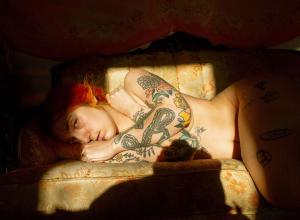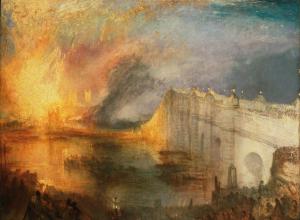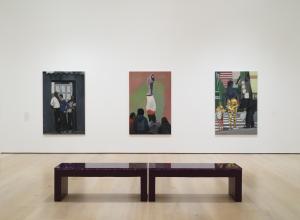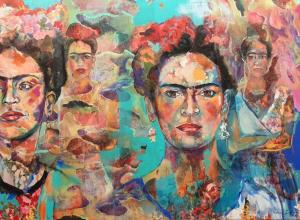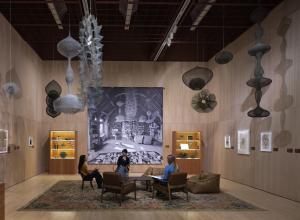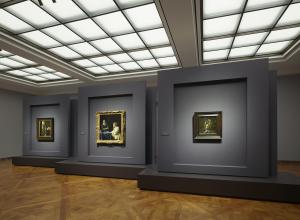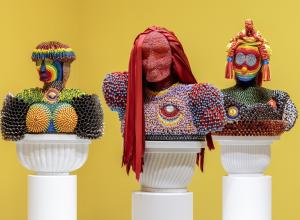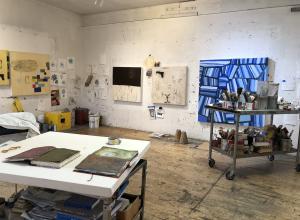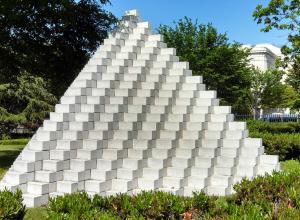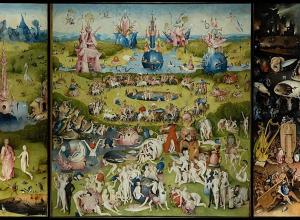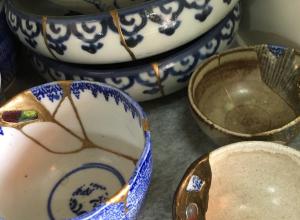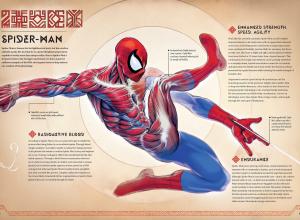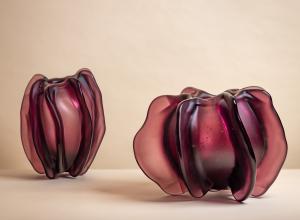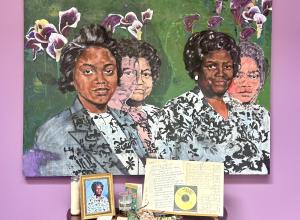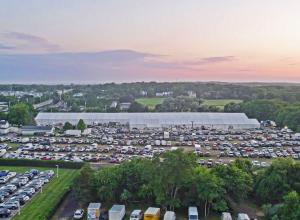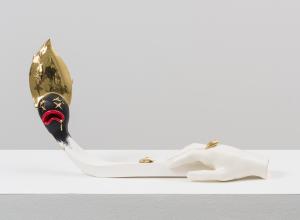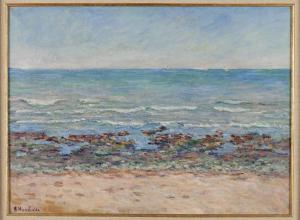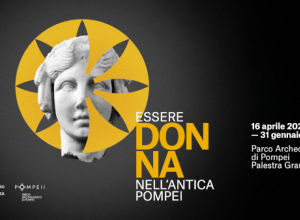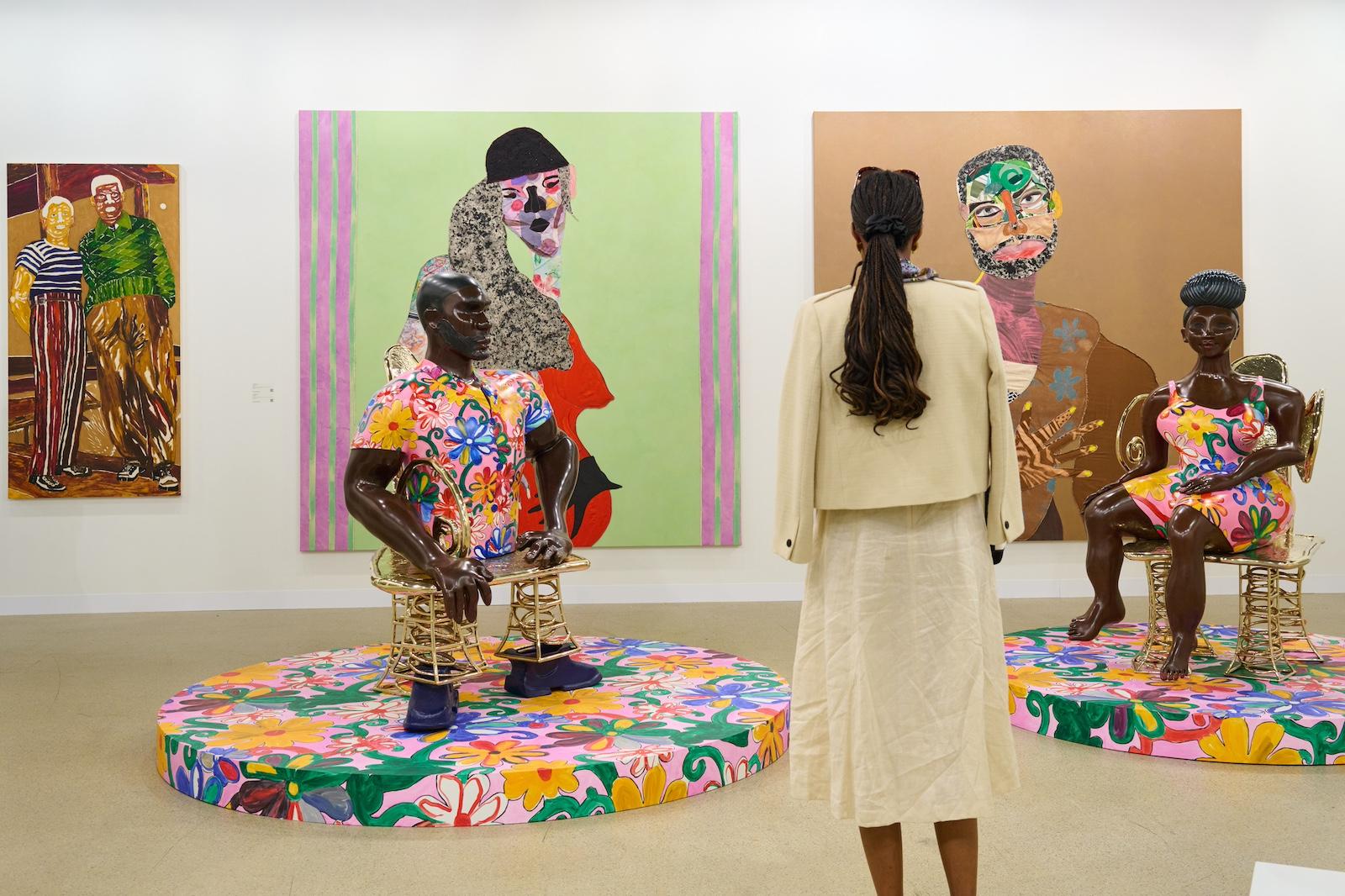
Galerie Eva Presenhuber.
Returning to its city of origin for the 55th year in the third week of June, Art Basel featured 289 top international galleries from 42 countries and territories. Celebrated as the world’s leading art fair, it attracted 88,000 visitors during both preview and public days, welcoming collectors, curators, and art enthusiasts from around the globe, including representatives from over 250 renowned museums and foundations.
“This year’s edition of Art Basel has shown the enduring strength, resilience, and global reach of the international art market,” said Maike Cruse, Director of Art Basel in Basel. “The energy in the halls and throughout the city was a powerful reminder of Basel’s role as a cultural hub and a catalyst for artistic exchange.”
Offering a broad view of the modern and contemporary art market, Art Basel displayed high-quality works from both established artists and emerging talents in the gallery booths, along with engaging public projects in the Parcours sector and spectacular large-scale installations and performances in the Unlimited section.
From Arturo Kameya’s storytelling installation addressing cultural myths about his fellow Peruvians, showcased by GRIMM in the Statements section, to Atelier Van Lieshout’s monumental procession of sculptural objects leading us to a better future, presented by four collaborating international galleries at Unlimited, these are the highlights from this year’s fair.
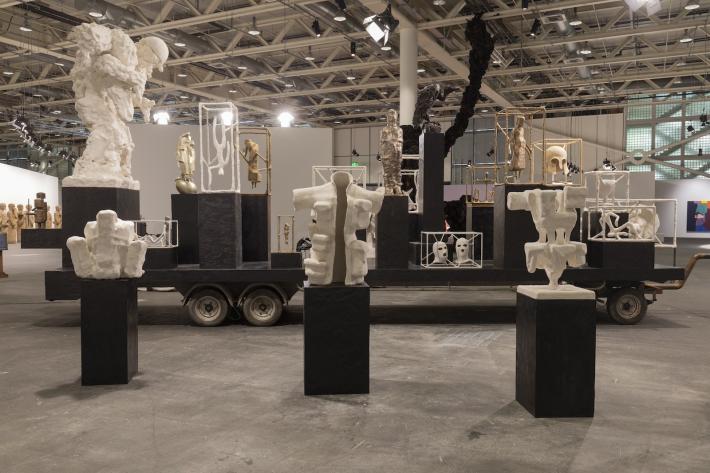
A multidisciplinary artist, Joep van Lieshout founded Atelier Van Lieshout in 1995 to challenge the myth of the artistic genius. Working between the worlds of minimalist design and non-functional art, his sculptures, installations, buildings, and furniture reference utopias and dystopias. A Dutch master of recycled assemblage, his provocative projects explore recurring themes, motives, and obsessions, such as systems, power, self-sufficiency, life, sex, and death.
Five years in the making, his installation The Voyage – A March to Utopia is arguably his magnum opus, at least at this point in his life. Occupying more space than any other exhibit at Unlimited, the section of the fair dedicated to monumental artworks and performances, the expansive collection of 160 sculptures forms a procession of symbols from the past and present, guiding us toward a better future. Made up of countless objects, sculptures, and machines, The Voyage symbolizes humanity’s relentless, unseeing pursuit of happiness. The procession is joyful, yet also serves as a warning, acting as a living tribute to our longing for freedom, independence, and a sense of purpose. It encourages us to reflect on what we carry with us, what we leave behind, and what truly sustains us—the drive to keep moving forward.
Image: Atelier Van Lieshout, The Voyage – A March to Utopia, 2025. Art Basel Unlimited.
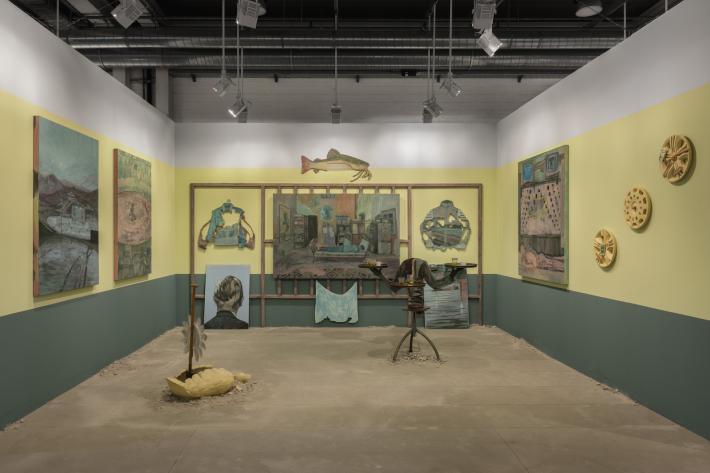
On view in Statements, which focuses on bold solo projects by emerging artists, and running concurrently with his solo show at the gallery’s flagship location in Amsterdam, Peruvian artist Arturo Kameya’s new installation, Every step is a payment in full, addresses myths about laziness and alcoholism among his fellow countrymen. A storyteller at heart, Kameya, based in Amsterdam and a graduate of the city’s renowned Rijksakademie, is known to create artwork that explores the narratives forming various versions of Peru’s socio-political history.
Installed on painted walls matching the coloration of his works, he displayed more than a dozen paintings and sculptures, rendered in a distinctive pale palette of yellow and green acrylics with clay powder on wood, that tell the story of a growing focus on physical education after the loss of a war with Chile. Depicting broken football players who turned to drink, a guy sleeping the day away, and men wasting time watching an uninteresting cockfight, Kameya’s works tell an ironic tale of apathy. However, because of the ambitious nature of the project and the excellent execution of the work, we see that this talented artist is anything but idle.
Image: Arturo Kameya, Every step is a payment in full, 2025. Dimensions and materials variable. Art Basel Statements.
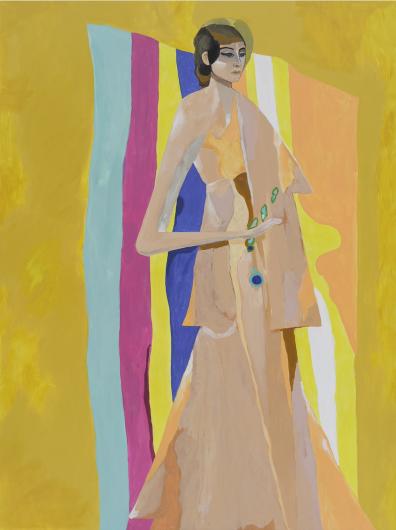
Creating individual characters, like stage actors posing for promotional photos in costumes, without a constructed narrative, Lothar Hempel depicts archetypes that reference personalities and role models as old as time. Painting 10 works on aluminum grounds portraying costumed figures posing with props for the gallery’s Kabinett presentation, the Berlin-based artist created a series of scenes, ranging from the leads in Greek tragedies to modern film roles, played by individual actors in idiosyncratic settings.
Presented as if arriving on stage, waiting to speak, or pausing for applause, they stand frozen in time—subjects repeated throughout history, reflecting who we are, who we were, and who we will become. Titling the series Floating Pictures, Hempel arranged them on the walls of the booth to achieve just that: to float through time, poetically fulfilling his desire to create “images that could have been painted 10,000 years ago.”
Image: Lothar Hempel, Untitled (prism), 2025. Acrylic paint and oil on aluminum, 63 x 47 1/4 inches (160 x 120 cm). Art Basel Kabinett.
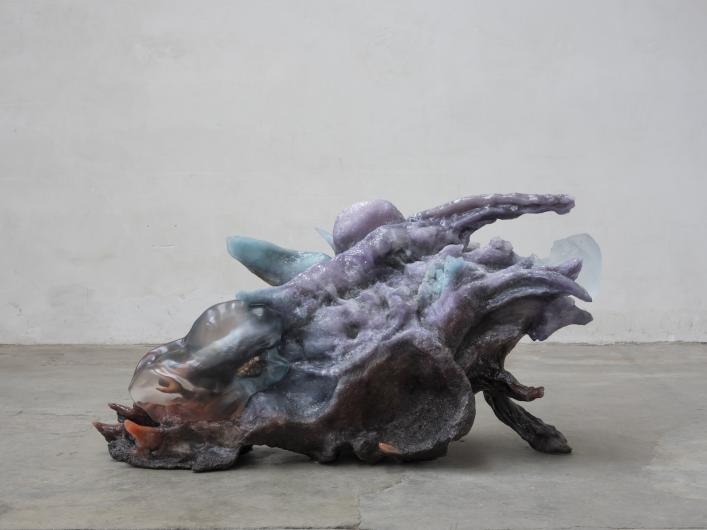
An artist who views exhibitions as fictional worlds where alternate realities and possible universes are explored, Pierre Huyghe examines the connection between human and non-human entities, as well as the nature of experiencing time. Fresh off a solo show at New York’s Marian Goodman Gallery, where he displayed moving images and sculptures that explore the liminal state in which humans are radically de-centered, the artist presented a similar Mind's Eye sculpture—created from a mental image—at the fair.
In collaboration with a lab in Kyoto, he transformed a test subject’s visualization of a word into a video, then digitally created a 3D-printed version and a mold for the final piece, which was cast in sugar and resin with added colorants. Otherworldly in its presentation, it demonstrates how human manipulation of technology can enhance nature, though not always in a recognizable way.
Image: Pierre Huyghe, Mind's Eye (FY), 2024. Materialized deep image reconstruction, synthetic and biological material aggregate (sugar, resin, bronze, copper, bismuth, iron oxide, metal slag, shellac, sisal, foam, glass, stainless steel), micro-organisms, 88 x 63 x 171 cm. Edition of 2.
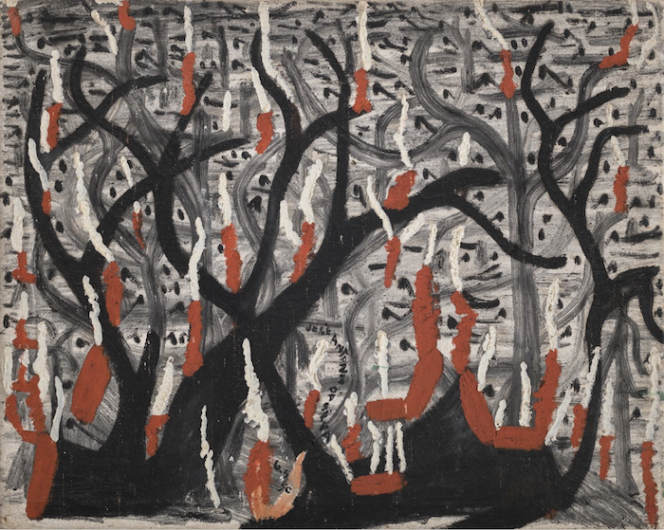
The son of coffee plantation farmers, José Antônio da Silva documented rural life in Brazil that contributed to the growth of its urban centers from the 1940s through the 1990s. A self-taught painter, he focused on the rural world of cotton, livestock, and sugarcane economies—a world he well understood. Capturing the spirit of his homeland during this period of growth, his paintings were exhibited at the São Paulo Biennial and the Venice Biennale in the 1950s.
At the fair, the gallery showcased over a dozen of his small-scale expressive works. Figuratively illustrating laborers picking cotton, logging trees, laying railroad tracks, lining up for church, and pursuing the middle-class dream of owning a subdivision house, his vibrant canvases convey a spirit of optimism and community. Other paintings more abstractly portray endless rows of crops, numerous burnt and felled trees, and countless hoes working the soil on reclaimed forest land—showing how the previously naive artist grew more sophisticated over time.
Image: José Antonio da Silva, Queimada, 1950.
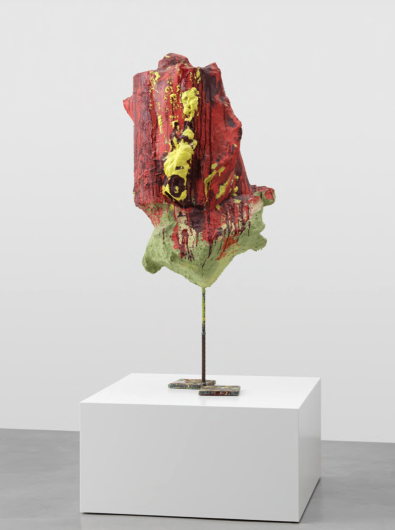
Celebrated for his innovative sculptures, installations, and furniture that engaged the audience through social interaction, Franz West was actively exhibiting in Austria and Germany during the 1970s before gaining more international recognition in the 1990s. Working with found objects and inexpensive materials, he created painted collages influenced by Pop Art, as well as monochromatic plaster sculptures that redefined both Expressionism and Minimalism. He later crafted tables and chairs as utilitarian works of art.
With a current museum-quality exhibition titled “Early Works" at one of the gallery’s Zurich locations, the booth showcased a prime example of his assemblage sculptures, made from discarded objects covered in plaster, gauze, and papier mâché, before being gesturally painted. Mounted on two steel slabs connected to a steel rod used for reinforcing concrete, which West also used in his avant-garde furniture, the untitled piece stands proudly as a truly unique work of art.
Image: Franz West, Untitled, 2007. Papier-mache, metal, acrylic paint, 50 3/4 x 23 1/4 x 23 1/4 in/129 x 59 x 59 cm.
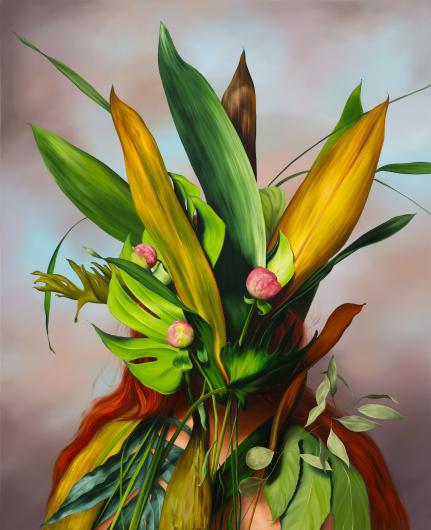
Best known for her captivating female portraits inspired by classic 18th and 19th century paintings, Ewa Juszkiewicz creatively reimagines feminist takes on Neoclassical art masterpieces. Concealing her elegant women’s faces with everything from bunches of flowers and mushrooms to twisted dress fabrics and hair, the popular Polish painter dramatically transforms her subjects, challenging traditional depictions of women in the skillful style of the male—and sometimes female–artists she subverts. Initially catching sight of a beautiful bouquet, we gradually notice the locks of long, red hair flowing down the shoulders of a veiled woman in the painting Portrait with Peonies, a surreal highlight at the gallery’s booth and the fair.
Image: Ewa Juszkiewicz, Portrait with Peonies, 2025. Oil on canvas, 160 x 130 cm, 63 x 51 in.
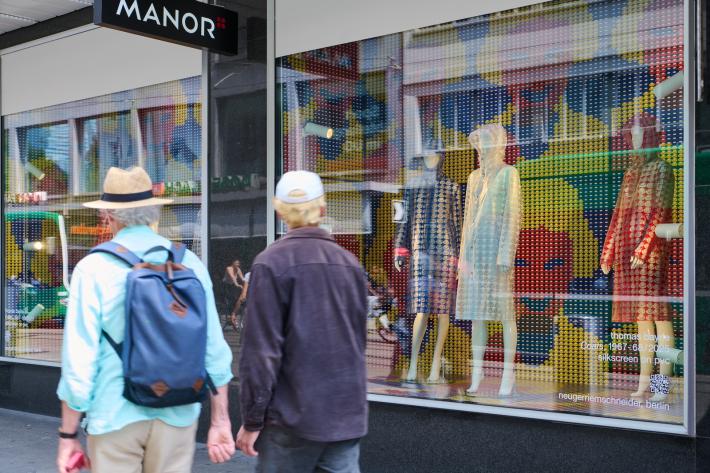
Fascinated with textile design in the 1950s, Thomas Bayrle eventually studied printmaking, gaining attention as a Pop artist in the 1960s while simultaneously running commercial display and screen-printing workshops—skills he continues to utilize. Working with grids and repetition, inspired by his early exposure to Jacquard looms, the Frankfurt-based multidisciplinary practitioner and former teacher has become one of the influential German artists of his generation.
Participating in the Parcours section of the fair, which showcases site-specific public projects along the streets near the Messe, home of Art Basel, Bayrle recreated a patterned plastic raincoat that he had first made in the 1960s. Repeating illustrated coffee cups with saucers, produced in three colors—red, white, and blue—the new versions were displayed in department store windows and inside, where they were stylishly and quite effectively offered for sale.
Image: Thomas Bayrle, Coats, 1967–68 / 2025. Art Basel Parcours.
![Jonathan Monk, 15 Exhibit Model Detail with Additional Information XV, 2021. Inkjet print on aludibond in grey shadowbox frame, The Smiths record 1984 (Cover star Joe Dallesandro pulled from Andy Warhol's "Flesh", directed by Paul Morris- sey [1968]) in plexiglass box; signed John Baldessari post card in red frame; three oranges cast from real in PU resins and silicones on grey painted shelves, 132.5 x 170.5 x 4 cm. Courtesy Cristina Guerra Contemporary Art, Lisbon.](https://cdn.artandobject.com/sites/default/files/styles/slideshow_image/public/8-15-exhibit-model-detail-additional-information-xv-2021-1325x1705x14cm01-1-1-copy.jpg?itok=5a5mXrRT)
With the maxim “being original was almost impossible, so I tried using what was already available as source material for my own work,” Jonathan Monk has built a successful career as an appropriation artist, a style that was popular when he started art school in 1987 and continues to hold a significant place in the art world today. The Berlin-based British artist revisits, transforms, and reevaluates key works of Conceptual and Minimal art using clever, inventive, and irreverent methods. Through painting, sculpture, and photography, the artist honors figures like Sol LeWitt, Ed Ruscha, Bruce Nauman, and Lawrence Weiner, while also clarifying the creative process.
An excellent example of his witty appropriation work, 15 Exhibit Model Detail with Additional Information XV references John Baldessari, Andy Warhol superstar Joe Dallesandro, British indie-music sensations The Smiths, and Monk’s youth in a single work of art. Baldessari’s signed postcard to Joe Dallesandro is mounted in a red frame; The Smith’s first album, which was also Monk’s first Smith’s record, is displayed in a Plexi box, featuring a film still of Dallesandro from Warhol’s movie Flesh, directed by Paul Morrissey, on the cover; and three real oranges on shelves referencing a Baldessari artist book, that documented his attempts at throwing three orange balls in the air to form a straight line, are overlaid with the other physical items on an installation view of one of Monk’s solo shows. A brilliant overview of what inspires this artist, it also serves as a visual metaphor for the diversity of art and ideas at the fair.
Image: Jonathan Monk, 15 Exhibit Model Detail with Additional Information XV, 2021. Inkjet print on aludibond in grey shadowbox frame, The Smiths record 1984 (Cover star Joe Dallesandro pulled from Andy Warhol's "Flesh", directed by Paul Morris- sey [1968]) in plexiglass box; signed John Baldessari post card in red frame; three oranges cast from real in PU resins and silicones on grey painted shelves, 132.5 x 170.5 x 4 cm.
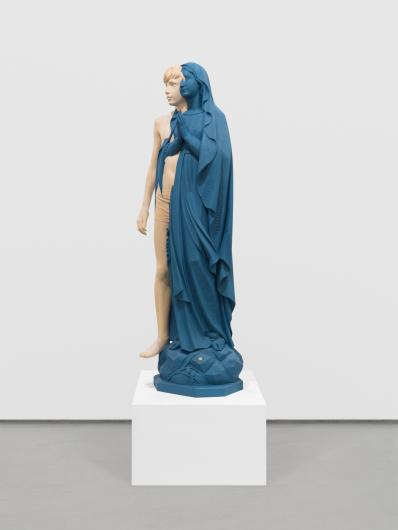
An Italian sculptor trained in the traditional craft of religious sculpture in his hometown in the Dolomites, Gehard Demetz was an apprentice to a master carver before studying the craft further across Europe and eventually creating his own work. The artist, best known for employing children as models to explore contemporary culture and its destructive tendencies—through the broader influences of war, religion, and politics—meticulously hand-carves his works in Lindenwood, a material he favors for its monochromatic qualities.
His new sculpture, The Halves, which he created for presentation in the gallery’s group show at the fair, merges a young boy with one of the most sacred representations of the Madonna, Our Lady of Lourdes. Fusing the famous statue of the Virgin Mary with a boy who modeled for the work, Demetz referenced a news story he had read about German youths—threatened by the conflict in Ukraine—who were being prepared for war. Instead of the boy turning to religion for answers to solve the situation, as the Italians did in World War II, the artist shows him searching outward for something new. Referencing religious myths and controversies in the work, Demetz depicts the Madonna’s praying hands rising from the boy’s rib and her crucifix covering his private parts. However, he also adds a touch of humor by purposely exposing the youth’s toenail in the Madonna’s reverently painted blue form.
Image: Gehard Demetz, The Halves, 2025. Lindenwood and acrylic paint, 59 1/16 x 14 15/16 x 18 1/8 inches.

A multidisciplinary artist, Joep van Lieshout founded Atelier Van Lieshout in 1995 to challenge the myth of the artistic genius. Working between the worlds of minimalist design and non-functional art, his sculptures, installations, buildings, and furniture reference utopias and dystopias. A Dutch master of recycled assemblage, his provocative projects explore recurring themes, motives, and obsessions, such as systems, power, self-sufficiency, life, sex, and death.
Five years in the making, his installation The Voyage – A March to Utopia is arguably his magnum opus, at least at this point in his life. Occupying more space than any other exhibit at Unlimited, the section of the fair dedicated to monumental artworks and performances, the expansive collection of 160 sculptures forms a procession of symbols from the past and present, guiding us toward a better future. Made up of countless objects, sculptures, and machines, The Voyage symbolizes humanity’s relentless, unseeing pursuit of happiness. The procession is joyful, yet also serves as a warning, acting as a living tribute to our longing for freedom, independence, and a sense of purpose. It encourages us to reflect on what we carry with us, what we leave behind, and what truly sustains us—the drive to keep moving forward.
Image: Atelier Van Lieshout, The Voyage – A March to Utopia, 2025. Art Basel Unlimited.

On view in Statements, which focuses on bold solo projects by emerging artists, and running concurrently with his solo show at the gallery’s flagship location in Amsterdam, Peruvian artist Arturo Kameya’s new installation, Every step is a payment in full, addresses myths about laziness and alcoholism among his fellow countrymen. A storyteller at heart, Kameya, based in Amsterdam and a graduate of the city’s renowned Rijksakademie, is known to create artwork that explores the narratives forming various versions of Peru’s socio-political history.
Installed on painted walls matching the coloration of his works, he displayed more than a dozen paintings and sculptures, rendered in a distinctive pale palette of yellow and green acrylics with clay powder on wood, that tell the story of a growing focus on physical education after the loss of a war with Chile. Depicting broken football players who turned to drink, a guy sleeping the day away, and men wasting time watching an uninteresting cockfight, Kameya’s works tell an ironic tale of apathy. However, because of the ambitious nature of the project and the excellent execution of the work, we see that this talented artist is anything but idle.
Image: Arturo Kameya, Every step is a payment in full, 2025. Dimensions and materials variable. Art Basel Statements.
Paul Laster
Paul Laster is a writer, editor, curator, advisor, artist, and lecturer. New York Desk Editor for ArtAsiaPacific, Laster is also a Contributing Editor at Raw Vision and Whitehot Magazine of Contemporary Art and a contributing writer for Art & Object, Galerie, Artforum, Artsy, Ocula, Family Style, Sculpture, and Conceptual Fine Arts. Formerly the Founding Editor of Artkrush, he began The Daily Beast’s art section and was Art Editor at Russell Simmons’ OneWorld Magazine. Laster has also been a Curatorial Advisor for Intersect Art & Design and Unique Design, as well as an Adjunct Curator at P.S.1 Contemporary Art Center, now MoMA PS1.




